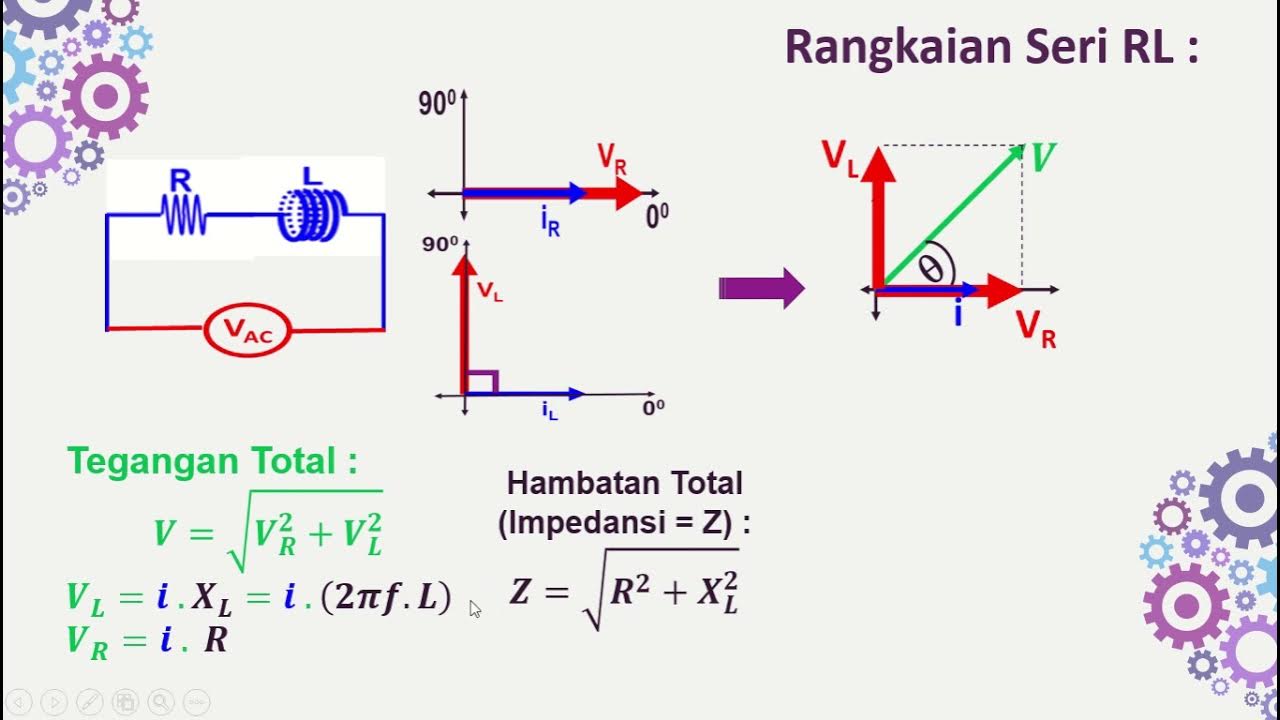Electrical Engineering: Ch 8: RC & RL Circuits (1 of 43) RC & RL Circuits Introduction
Summary
TLDRIn this video, we begin a series on RC and RL circuits in electrical engineering. RC circuits consist of resistors and capacitors, while RL circuits have resistors and inductors. The focus is on first-order circuits, where differential equations are used to calculate current and voltage. The video introduces the fundamentals of analyzing these circuits, with the goal of understanding how to calculate current through branches and voltage across them. More complex examples will be explored in future lessons, eventually leading to second-order circuits that involve resistors, capacitors, and inductors together.
Takeaways
- 😀 RC and RL circuits are foundational concepts in electrical engineering.
- 😀 'R' stands for resistance, 'C' stands for capacitance, and 'L' stands for inductance.
- 😀 An RC circuit consists of a capacitor and a resistor, while an RL circuit consists of an inductor and a resistor.
- 😀 RC and RL circuits are considered first-order circuits because their equations result in first-order differential equations.
- 😀 The current in an RC circuit is influenced by capacitance and the rate of change in voltage over time.
- 😀 The voltage across an inductor in an RL circuit is influenced by inductance and the rate of change in current.
- 😀 First-order circuits focus on simpler, single components (resistors and capacitors or inductors).
- 😀 The chapter focuses on learning how to calculate current and voltage in RC and RL circuits.
- 😀 More complex circuits combining capacitors, inductors, and resistors will be explored in later chapters.
- 😀 This video series will continue to dive deeper into RC and RL circuits, providing more examples and explanations.
Q & A
What does 'RC circuit' stand for?
-An RC circuit is a type of electrical circuit that includes a resistor (R) and a capacitor (C).
What does 'RL circuit' stand for?
-An RL circuit is a type of electrical circuit that includes a resistor (R) and an inductor (L).
Why are RC and RL circuits referred to as 'first order circuits'?
-RC and RL circuits are considered 'first order circuits' because the equations that define the current and voltage involve first-order differential equations.
What is the relationship between the current and voltage in an RC circuit?
-In an RC circuit, the current is defined as the capacitance times the rate of change of the voltage over time.
How is the voltage across an inductor defined in an RL circuit?
-The voltage across an inductor in an RL circuit is equal to the inductance times the rate of change of the current through the inductor with respect to time.
What is meant by 'first order' in the context of RC and RL circuits?
-In the context of RC and RL circuits, 'first order' refers to the fact that the governing equations are first-order differential equations, meaning they involve the first derivative of a quantity with respect to time.
Will capacitors, inductors, and resistors be combined in this chapter?
-No, in this chapter, capacitors and inductors are not mixed with resistors in the same circuit. This will be explored in a later chapter when dealing with second order circuits.
What will the next chapter cover in terms of circuit analysis?
-The next chapter will cover second order circuits, where capacitors, inductors, and resistors are combined in the same circuit.
What is the goal of this chapter regarding RC and RL circuits?
-The goal of this chapter is to teach how to calculate the current through any branch and the voltage across any branch in RC and RL circuits.
Why are RC and RL circuits considered easier to analyze compared to second-order circuits?
-RC and RL circuits are considered easier to analyze because they involve first-order differential equations, which are simpler to solve than the second-order equations that arise when combining capacitors, inductors, and resistors in the same circuit.
Outlines

This section is available to paid users only. Please upgrade to access this part.
Upgrade NowMindmap

This section is available to paid users only. Please upgrade to access this part.
Upgrade NowKeywords

This section is available to paid users only. Please upgrade to access this part.
Upgrade NowHighlights

This section is available to paid users only. Please upgrade to access this part.
Upgrade NowTranscripts

This section is available to paid users only. Please upgrade to access this part.
Upgrade NowBrowse More Related Video

Rangkaian Seri RL-RC-LC dengan Sumber AC

RC and RL Circuits

BASIC ELECTRICAL & ELECTRONICS | AC CIRCUIT | BEE | S-1 | FIRST YEAR ENGINEERING | SEM-1 | INTRO.

Electrical Engineering: Ch 8: RC & RL Circuits (35 of 65) Step Response of an RL Circuit

Network Theory Introduction | Synthesis of Circuit | Difference in between Network and Circuit

"Ohm’s Law: Learn it Forever!"😲#ohmslaw #history #electrical#current#iti#physics #viralvideo#foru#ac
5.0 / 5 (0 votes)